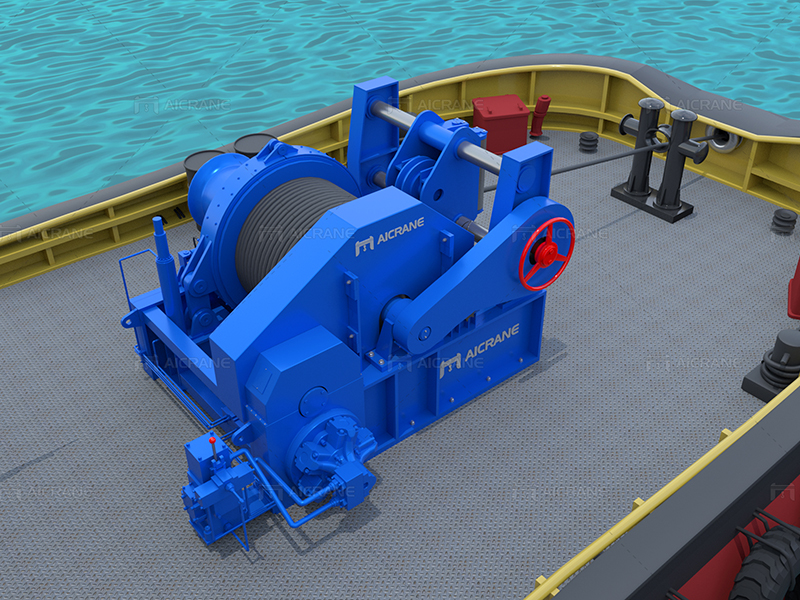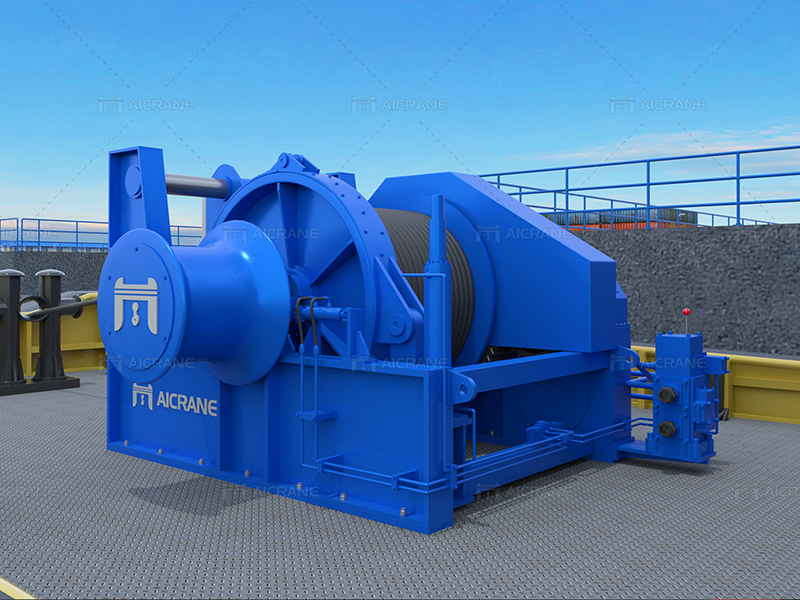Marine towing winches play a pivotal role in the maritime industry, providing vessels with the capability to tow or be towed safely and efficiently. These robust mechanical systems are designed to handle the complexities of maritime towing operations, offering a controlled means to reel in or pay out towing lines. In this article, we delve into the intricacies of how a marine towing winch operates, exploring the key components, operational principles, and the vital role they play in ensuring the safety and effectiveness of towing at sea.

Understanding the Basics:
At its core, a marine towing winch is a mechanical device designed to manage the tension, length, and deployment of towing lines. These lines are crucial for tasks such as towing other vessels, assisting with anchor handling, or even executing emergency maneuvers. The fundamental operation of a tow winch involves controlled winding and unwinding of the towing line, and this process is orchestrated by several key components.
Key Components of A Tow Winch:
Winch Drum: The winch drum is the heart of the operation. It is a cylindrical spool around which the towing line is wound. The drum is connected to the winch’s power source and can rotate in both directions, allowing the controlled winding or unwinding of the towing line.
Power Source: Marine towing winches are powered by either hydraulic or electric systems. Hydraulic systems are commonly used for their robustness and ability to handle heavy loads, while electric systems offer precise control and ease of operation.
Control Panel: The control panel serves as the interface between the operator and the towing winch. It allows the operator to control the direction, speed, and tension of the towing line. Modern control panels may include digital displays for accurate monitoring and control.
Brake System: The brake system is a critical safety component. It ensures that the winch drum can be held in a fixed position or slowed down when needed. This prevents uncontrolled unwinding and provides stability during towing operations.
Operational Process:
Winding the Towing Line: When a vessel needs to tow another or perform any towing-related task, the towing line is attached to the winch drum. The operator activates the winch, causing the drum to rotate and wind the towing line onto it.
Tension Control: The control panel allows the operator to adjust the tension in the towing line. This is crucial for maintaining stability and preventing sudden jerks or snatching during towing. Tension control is achieved by regulating the speed and direction of the winch drum rotation.
Unwinding the Towing Line: When the towing operation is complete, or the line needs to be paid out, the operator reverses the rotation of the winch drum. This carefully unwinds the towing line, allowing it to be released in a controlled manner.
Emergency Stop Mechanism: Safety is paramount in maritime operations. Most towing winches are equipped with emergency stop mechanisms, such as buttons or switches, that immediately halt all winch operations in case of a critical situation.

Safety Features:
Marine towing winches are equipped with various safety features to ensure the protection of personnel, equipment, and the vessels involved. Some of the key safety features include:
Overload Protection: To prevent damage to the marine winch and ensure safe operations, overload protection mechanisms are integrated. These systems can automatically reduce or halt winch operations if the load exceeds the specified capacity.
Fail-Safe Braking: Fail-safe braking systems are designed to engage in the event of a power failure or other emergencies. This ensures that the winch drum is promptly immobilized, preventing uncontrolled movement.
Monitoring Systems: Modern towing winches often come equipped with monitoring systems that provide real-time feedback on crucial parameters, such as tension levels, line speed, and temperature. This allows operators to make informed decisions and take corrective actions as needed.
Operational Challenges and Adaptations:
Sea Conditions: The performance of a marine towing winch can be affected by sea conditions. Manufacturers provide guidelines on safe operating limits based on factors such as wave height and vessel movement. Dynamic tension control becomes particularly crucial in challenging sea states.
Corrosion Resistance: Given the corrosive nature of the marine environment, towing winches are constructed using corrosion-resistant materials. Additionally, manufacturers may apply protective coatings and recommend regular maintenance to ensure the longevity of the equipment.
Conclusion:
In conclusion, a marine towing winch is a sophisticated yet indispensable component in the maritime industry. Its seamless operation is a result of the harmonious interplay of various components, each serving a specific purpose to ensure the controlled handling of towing lines. From the winch drum to the control panel and safety features, every element plays a vital role in maintaining the safety and efficiency of towing operations at sea. As technology advances, we can expect further innovations in the design and operation of marine towing winches, contributing to safer and more reliable maritime activities. For more info, click here https://winchmachines.com/